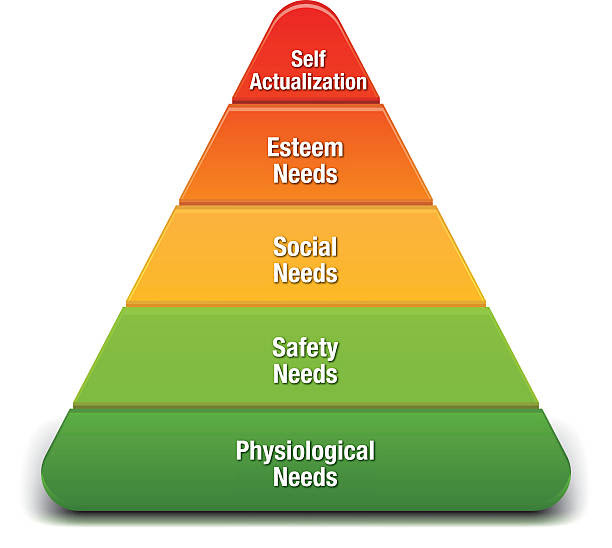
What’s the hottest term in community bank marketing these days? Personalization.
According to Adobe Business, “everywhere you look, brands are embracing personalization.” And, it’s true. “From the ads that pop up on your social media feed to the barista at the local coffee shop who greets you by name, customers are growing accustomed to personalized experiences.” And this is especially true: “While personalization isn't a new concept, recent advances in technology have transformed how and where it can be used.”
Adobe goes on to point out that, according to research firm McKinsey, 71% of consumers said they expect companies to deliver personalized interactions. And 76% get frustrated when this doesn’t happen. The upshot? Whether your audience is interacting with your brand through your in-branch personnel, your social media posts, your website, or your emails, one thing is certain; your audience has come to expect a personalized experience that makes them feel valued.
Yes, marketing is becoming more and more personalized, and yes, technology has certainly proven central to that evolution. But, technology is not the “personalized experience” silver bullet. In fact, the secret to personalizing a customer experience can be traced back much further than, say, the recent advent of AI (Artificial Intelligence)-powered, data gathering tech solutions. It actually dates back to the mid-20th Century and to a psychologist named Abraham Maslow.
What Is Maslow’s Hierarchy of Needs?
It was Maslow who posited that humans have 5 levels of needs they must fulfill; he called this his Hierarchy of Needs. These needs can range from physiological and safety needs to more abstract ones such as love, esteem or self-fulfillment. While popularly portrayed as a pyramid, research indicates that the fulfillment of one need is not necessarily dependent on another. At the bottom of the triangle is the need for basics such as food and clothing; in the middle are safety and belonging; and at the top is the need for self-actualization.
Why is this important to marketers? When we are developing the marketing messaging around our products, we want to talk to that audience at the very highest level of the triangle, and that’s because the higher up you go in the triangle the more important, and emotional, that level of need becomes. Food and shelter needs, for instance, can be easily met while understanding who you are and why you're on this planet is not so easy.
What is a Buyer Persona?
A buyer persona is a “picture” of an idealized customer that depicts their internal motivations and pain points. Rather than solely relying on hard data points or “demographics”, such as income or home address, a buyer persona is built upon “psychographics,” exploring the intangible desires that drive customers to make purchases. A buyer persona might be as simple as a chart with several bullet points or it may take the form of an elaborate story. However you decide to present the persona, it will contain the essence of what drives a customer.
Maslow And Buyer Personas
When we think about applying Maslow’s hierarchy to marketing, it becomes immediately apparent that there are distinct needs that will require their own set of messaging to reach. The messaging for someone who is looking to fulfill physiological needs, such as belonging, is dramatically different from someone seeking to fulfill more basic needs, such as safety. If we think about the specific needs a buyer persona will want to fulfill at a specific level within Maslow’s hierarchy, we can craft our marketing to reach the specific type of buyer we hope to reach.
Bank marketers should use Maslow's triangle and buyer personas in crafting their marketing messaging because, together, they help us keep in mind that they’re offering more than just products and services. When we talk to customers about products and services, such as IRAs, CDs, and various types of accounts, we can’t simply talk to them in terms of how these products meet a basic need. Instead, we need to put those products and services in the context of those much more compelling, “top of the triangle” needs such as peace of mind, security, and an enhanced quality of life. Establishing a Living Trust, for example, isn’t just a way to protect your money… it’s a means to provide for loved ones. A loan isn’t simply a means to make a purchase. It can mean freedom, comfort, enjoyment. That’s what our marketing messaging must be designed to do.
Conclusion
When bank marketers pair buyer personas with Maslow’s hierarchy of needs, they have endless opportunities when it comes to reaching new customers with compelling messaging. Combining insights from both can help marketers better identify the needs of their customers and better position their business to fulfill them. Ultimately, giving serious consideration to Maslow’s hierarchy of needs, along with your buyer personas, will help you build a trusted brand with customers and with that, increased ROI.
Bank Marketing Center
Here at bankmarketingcenter.com, our goal is to help you with that topical, compelling communication with customers — developed by banking industry marketing professionals — that will help you build trust, relationships, and revenue.
Our web-based platform puts our client partners in complete control of their marketing production process – and for a fraction of traditional marketing costs. We’re also proud of the fact that we currently work with over 300 financial institutions.
Want to learn more about what we can do for your community bank and your marketing efforts? You can start by visiting bankmarketingcenter.com. Then, feel free to contact me directly by phone at 678-528-6688 or via email at nreynolds@bankmarketingcenter.com.